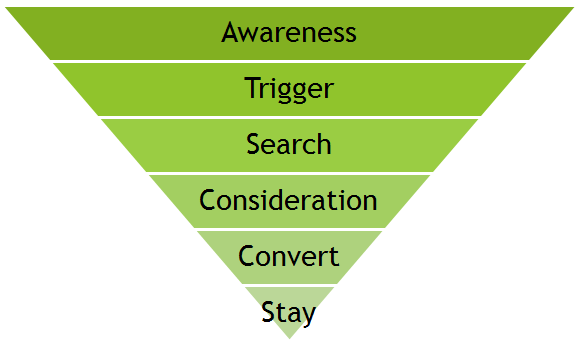Is Your Website in Dire Need of a Content Audit?

Has your organic search traffic gone flat? Are you losing keyword ranking for critical search terms? If the answer to either of the previous questions is yes – or more importantly, you’re just not sure where you stand, it’s probably due time to do a content audit.
A content audit is the process of examining all of your company’s web content assets for quality, relevance, SEO value, and messaging. User experience specialist Alina Petrova writes that it “begins with identifying all of [your] website’s existing content and aggregating it into a master list.” Much like any audit, a content examination requires an all-in approach. While you could see benefit from auditing your website’s ten most-popular pages, you’ll see significantly more results if you take a totally comprehensive approach.
We’re not going to pretend that a content audit is the most fun a marketer can have. As Sevilla points out, the process can be incredibly time-consuming, boring and even feel like you’re spinning your wheels since you’re not dedicating the time to original content creation or promotion. However, rest assured that if you’ve learned anything about SEO or content quality during your time writing for the web, or engaged in any re-branding efforts, there’s a significant chance a content audit could revolutionize your online presence.
Why Content Audits are Critical
If your company is engaged in re-branding efforts or migrating to a new content management system (CMS), like moving from WordPress to HubSpot, a content audit is definitely a best practice. The analysis will allow you to ensure that each page on your site is relevant, helpful, and up-to-date. If you’re struggling to improve your keyword ranking or website authority, content audits can also help you identify problematic pages, and improve your ranking for key search terms. Consider the following reasons why an audit could help much more than you ever imagined:
1. Duplicate Content Can Happen
SEO expert Stoney deGeyter believe the worst thing you can do to your website is publishing duplicate content. It sends a clear message to search engines that you’re cutting corners on your marketing strategy. Removing duplicate pages, like blog posts which were accidentally published twice, you could revolutionize your site’s credibility in Google’s eyes.
2. Broken Links Look Spammy
Even content strategies with the best intentions can appear spammy to search engines. Broken links indicate that your website has been abandoned. If you’ve cited an article on a webpage that’s been moved or deleted, your site could be suffering negative SEO as a result. A content audit should include a search for broken links, and replacement when necessary.
3. Best Practices and Facts Change
If you’ve been creating content around the same topic for more than a few months, there’s a good chance your early content just isn’t as relevant – or as accurate – as it used to be. Industries can change quickly, and failing to update your blog with the latest statistics and best practices can result in losing search ranking for terms important to your business. Search for articles in sore need of an update during your content audit.
4. You Could Uncover Hidden Gold
Many content marketers struggle to truly leverage their best content assets for prospect education after it’s published. Actionable marketing expert Heidi Cohen recommends that you consider a content audit like a quest for hidden gold. By identifying powerful articles that could benefit from being promoted continuously or revised for relevance, you can effectively utilize your existing assets.
5. Quality Can’t Be Ignored
There’s no shame in a renewed commitment to quality. It’s a fact that Google’s algorithm has changed significantly in recent years, and content strategies formulated prior to the Penguin update of 2012 might have included heavy keyword usage, or low-quality in hopes of gaining high search rankings quickly. SEO expert Brian Dean writes that one of the greatest benefits of an SEO audit is discovering holes in your early efforts.
6. You’ll Gain New Direction
Even if you’re not currently basing your content on your blog marketing metrics, a content audit is one of the best opportunities to take the plunge into an analytics-directed strategy. You’ll quickly begin to discover patterns among your best-performing content, whether it’s articles about Twitter or video content.
How to Dive into a Content Audit
If you’ve decided to commit to a full-scale content audit in the weeks to come, rest assured that no evaluation process can last forever. While content audits should probably be performed on an annual or biannual basis, having a distinct process in mind can ensure the entire project goes smoothly and as quickly as possible.
1. Compile a Giant Spreadsheet
The first step to a content audit is creating a spreadsheet to serve as a repository for all of your website pages. As Cohen points out, it’s simplest to evaluate on a page-by-page basis. The following graphic from Boost demonstrates some of the fields you can include in your spreadsheet:

Include a clear description of each website page, which will typically consist of the page or blog title, and URL. Other fields to include are space for notes on any changes made, number of inbound links, conversion rate, the CTA used, rich media types, keywords ranked on the page, views, and social shares.
Cohen recommends extending your content audit to include all other content marketing outlets, including your company’s social media pages, and content hosted on websites like Slideshare.
2. Categorize by Type of Content
If your company is blogging to generate new business, it pays to perform a critical evaluation of the category of content you’re producing. Kledzik recommends separating your existing blog articles and website pages into the following categories to determine how your outreach efforts stack up:

While your company may shy away from Kledzik’s terminology of “Awareness, Trigger, Search, Consideration, Convert and Stay,” and gravitate towards terms like “top-of-the-sales-funnel,” it’s important to determine whether you’re creating enough content for existing leads, customers and first-time website visitors. Categorize pages, and include these insights in your spreadsheet.
3. Check for Broken Links
While you can manually check each link on your pages to ensure they’re still in working order, performing an SEO review during your content audit will likely be quickest and easiest using a paid tool like Moz. Evaluate page load time and keyword ranking to determine whether each page is an SEO power player, or could use a few updates to make it more search-friendly. Track needed changes in your spreadsheet.
4. Update Calls-to-Action
Many conversion experts, including HubSpot’s Pamela Vaughan, recommend including a call-to-action button which links to a landing page on every single page on your website. Use your content audit as an opportunity to add CTAs to pages which lack this critical conversion opportunity, and update existing CTAs to include advertisements to more relevant offers.
5. Evaluate Quality
Quality is a highly subjective measure. If you’re enlisting the help of colleagues in your content audit, it’s probably wise to create a rubric for evaluating the depth of each site page. You may choose to rate each page, or create detailed notes about the factors which needed changes. Consider the following during the stage of your content audit where you examine quality:
- Is It Unique and Valuable? Does the content have significant knowledge or other value to offer your website visitors? Are you proud that it’s among your company’s content assets?
- Is It Well-Researched? Does the page include citations, statistics, and facts where appropriate, or does it tend toward fluffiness?
- Is It Human-Optimized? Does the page feel like it was written in hopes of racing to the top of Google, or is it written in a manner that’s sure to appeal to your buyer personas?
- Is It Easy-to-Read? Does the text include short sentences, bullet points, numbered lists, correctly-sourced images, and other factors which can make it visually-appealing and easy-to-digest?
- Does It Fulfill Its Purpose? While the purpose of blog articles can vary drastically, landing pages and other website pages should serve a very specific purpose. Your home page should clearly explain what your brand does, and why it’s a company worth engaging with. Your landing pages should do an effective job of selling the value of your content offers.
- Is It Long Enough? Even SEO experts struggle to agree about how long your content should be. You need enough words to explain a topic in depth, but Kledzik recommends adding value to any pages that clock in at 150 words or less.
- Is It Relevant? Have any key facts, stats, or tips changed since the time you originally wrote the page? Update, revise, edit, and trim to ensure your content is ready for social-sharing today.
6. Prune Your Pages
Extraneous, low-quality pages on your website won’t do your company or SEO any favors. Cohen recommends including a section in your content audit spreadsheet for pruning, which could include the following categories:
- Delete: If content is redundant or trivial, it may be time to simply kiss the page goodbye.
- Fix: Pages in need of any changes.
- Keep: Pages which pass every stage of your content audit, from quality to SEO.
7. Make All Necessary Changes
Here comes the really fun – or tough part, depending on how you look at it. Once you’ve compiled a thorough log of all changes needed to your website pages, it’s time to dive into revisions and rewriting. Keep in mind, no one expects you to complete the revision stage of your content audit overnight. Continually work at improvement, and track your progress in the spreadsheet.

8. Analyze
A completed content audit can be just the beginning of improved content marketing. Your spreadsheet is likely a treasure trove of data about your website, so dive into analysis of your efforts to date, changes made, and the blog analytics you compiled in the centralized location. You could choose to sort your changes to examine your content in the following lights:
- Performance Metrics: Which types of content performed best, in terms of traffic, inbound links, social shares, and conversions, over the lifetime of your blog? Was the content visual, technical, or centered on any given topic? How can you emulate these articles in the future?
- Competitive Analysis: Are there any glaring gaps in your content strategy, especially compare to your main competition? A thorough content audit can reveal glaring truths about topics and types of outreach you’ve neglected to cover to date.
- Content Assets: Did you uncover any hidden gems of blog articles or landing pages which have been gathering attention unnoticed by you? Be sure to leverage these high-performing pages for sharing on social media networks, in your email newsletters, and on other channels for content promotion.
There’s no denying the fact that a content audit can be exhausting. However, companies of all sizes can benefit from thoroughly examining their pages for quality, SEO factors, and performance. If you’re scared to look deep into the archives of your website, it may be a sure sign you’re due for some clean-up.

Comments (0)